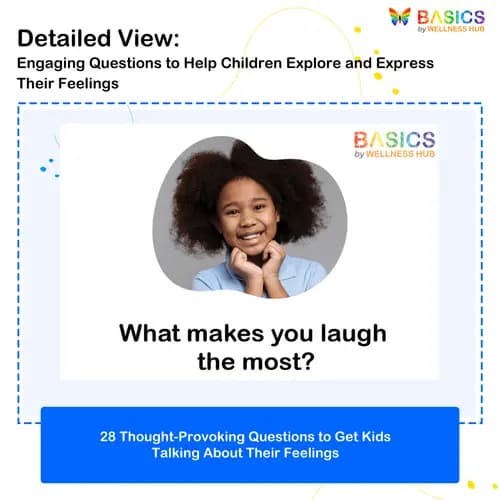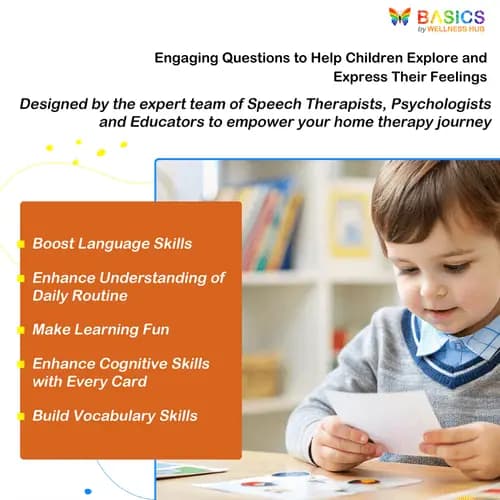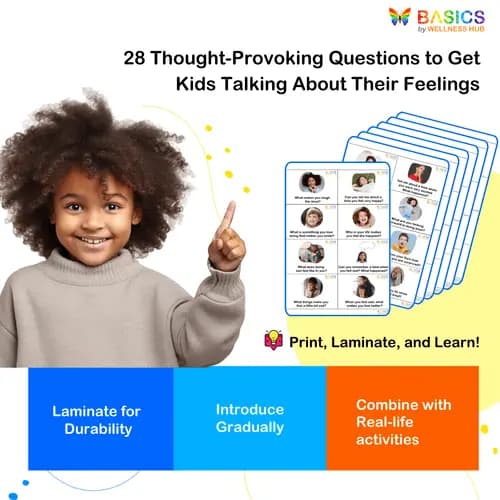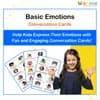

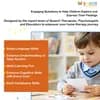

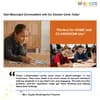
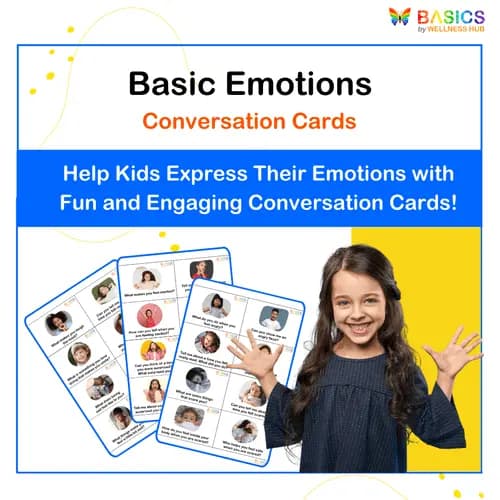
Conversation Cards - Basic Emotions: Questions to Help Kids Express Feelings
₹80
₹160
50% off
0 (0 ratings)
Grade Levels
Pre-K - Grade 3 (Ages 4-8)
Content Overview
Format: PDF, Total Pages: 4, Features: 28 emotion-related questions and statements with high-quality images.
Categories
Pages from the Resource
Help children explore and express their feelings with "Conversation Cards - Basic Emotions." This resource includes 28 engaging questions and prompts, such as "What makes you laugh the most?" and "Can you show me what you look like when you're tired?" Perfect for developing emotional awareness and communication skills in children ages 4-8.
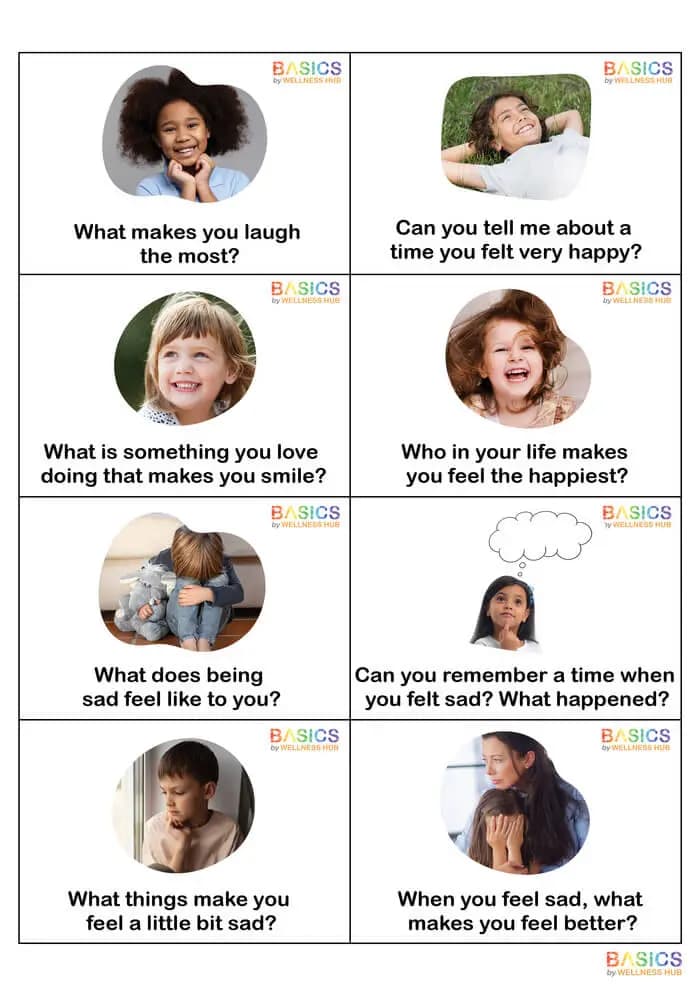
Page 1
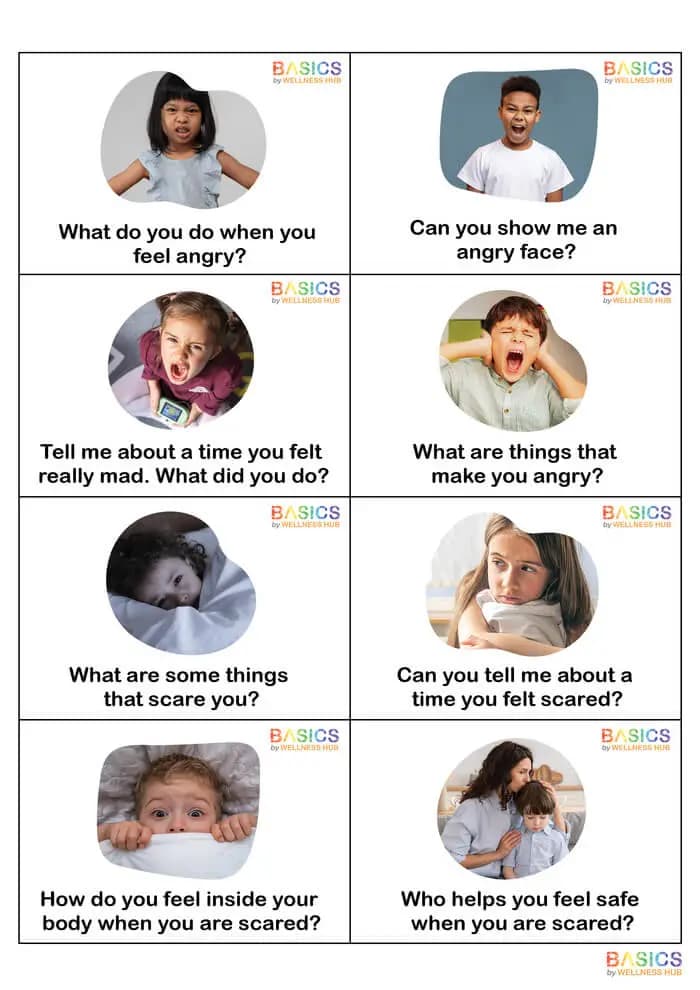
Page 2
What Users Say
0
0 ratings
5
0+
4
0+
3
0+
2
0+
1
0+
5 Stars
Product is Good to use.
1 year ago
Varsha Parent
Similar Products
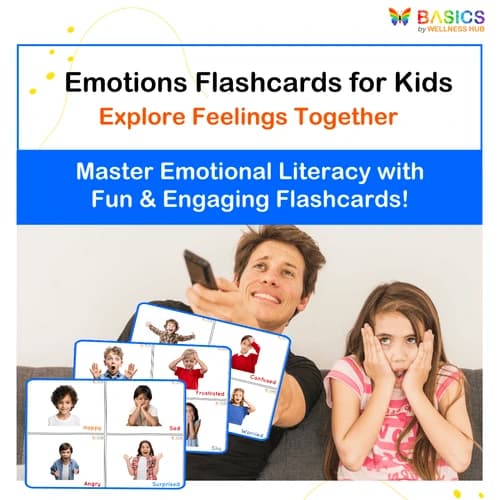
Emotions Flashcards for Kids: Free Printable PDF
FREE
₹160
50% off
4.8 (44 ratings)
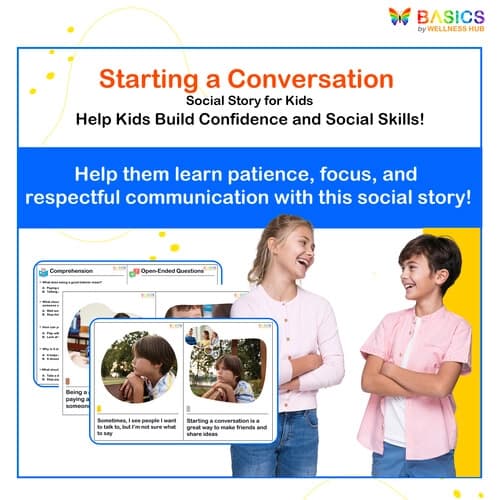
Starting Conversations – Social Story for Kids' Communication Skills
₹ 80.00
₹ 160.00
50% off
5.0 (56 ratings)
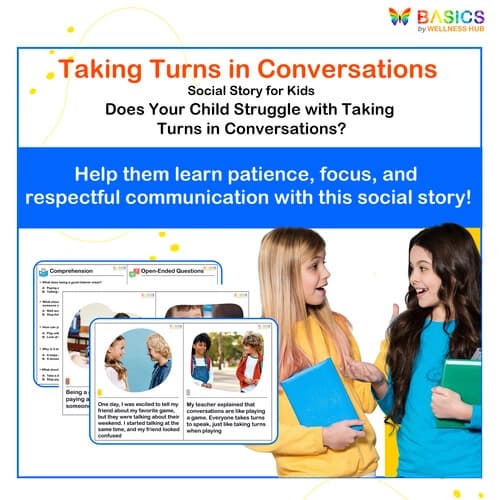
Taking Turns in Conversations – Social Story for Kids
₹ 80.00
₹ 160.00
50% off
4.9 (60 ratings)

Understanding Swear Words – Social Story for Respectful Communication
₹ 80.00
₹ 160.00
50% off
4.9 (48 ratings)
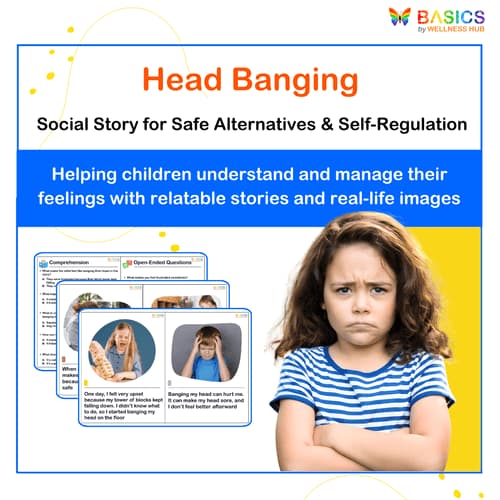
Head Banging – Social Story for Safe Alternatives & Self-Regulation
₹ 80.00
₹ 160.00
50% off
4.9 (50 ratings)
About the Product
Purpose of the Flashcards: The "Conversation Cards - Basic Emotions" resource is designed to help children recognize, express, and understand their feelings through guided conversations. Understanding emotions and learning to express them appropriately are essential components of social emotional learning (SEL) and early childhood development. These cards provide a fun, engaging way for children to explore their feelings while building communication skills, self-awareness, and empathy.
Target Audience: This resource is ideal for parents, educators, counselors, and special education professionals working with children ages 4-8. Whether used in a classroom, home, or therapy setting, these conversation cards serve as a versatile tool for teaching emotional intelligence and supporting positive social development.
Product Details
Content Description: The set includes 28 conversation cards, each featuring a high-quality image and a corresponding question or prompt designed to encourage children to express their emotions. The prompts include questions like "What makes you laugh the most?" and "Can you think of a time you were surprised?" as well as statements such as "Tell me about a time you felt really mad. What did you do?" The cards are organized into a 4-page PDF, with each page containing 8 cards.
Image Quality and Design: Each card features visually appealing and child-friendly images that align with the emotion being discussed. The design is clean and simple, with a focus on helping children engage with the prompts while connecting the images to real-life situations.
Educational Benefits
Emotional Awareness and Expression: These conversation cards are designed to help children identify and express their emotions in a healthy and constructive manner. By discussing feelings like happiness, sadness, anger, and surprise, children learn to recognize and articulate their own emotions as well as understand the emotions of others.
Social Emotional Learning (SEL): The cards provide opportunities for children to practice key SEL skills such as self-awareness, empathy, communication, and emotional regulation. Engaging with these prompts helps children develop a deeper understanding of their own feelings and how to respond to the emotions of others.
Language Development and Communication Skills: By encouraging children to respond to the questions and prompts, the conversation cards support language development and improve communication skills. Children practice using descriptive language and engaging in meaningful dialogue, which enhances their ability to express themselves clearly.
Building Confidence and Social Skills: Regularly discussing emotions helps children build confidence in expressing their thoughts and feelings. This resource also promotes social skills by encouraging positive interactions with peers, parents, and educators during discussions.
Instructions for Use
Printing Recommendations: For durability and ease of use, print the cards on thick, glossy cardstock. This will ensure that the cards can be handled frequently without wearing out. Laminating the cards is recommended, especially if they will be used in group settings or therapy sessions.
Cutting and Preparation: Carefully cut out each card along the indicated lines. You can choose to leave them as is or laminate them for extra protection. The cards can be stored in a small box or pouch for easy access during sessions.
Utilization Tips:
One-on-One Conversations: Use the cards in individual settings to engage a child in discussions about their feelings. Select cards that are relevant to recent experiences or emotions the child may be dealing with.
Group Activities: In a classroom or group therapy session, distribute the cards and ask each child to respond to a prompt. This encourages children to listen to each other, share their thoughts, and build social skills.
Daily Emotional Check-Ins: Incorporate the cards into daily routines by selecting one or two prompts each day. For example, start the day with a question like "What makes you happy?" to set a positive tone or use a card at the end of the day to reflect on feelings.
Role-Playing: Encourage children to act out the emotions described in the prompts, such as showing what it looks like when they feel tired or excited. Role-playing helps children better understand and express emotions through physical actions as well as words.
Storytelling and Creative Play: Use the cards as prompts for storytelling activities. Ask the child to create a story around a particular emotion or situation described on the card. This supports creativity while reinforcing emotional concepts.
Activities Using the Resource
Emotional Charades: In a group setting, each child takes a turn picking a card and answering the question or responding to the statement. For instance, a child might respond to "What makes you laugh the most?" by sharing a funny story. This activity builds empathy as children listen to each other's experiences and practice expressing their own feelings.
Emotion Reflection Circle: In a group setting, each child takes a turn picking a card and answering the question or responding to the statement. For instance, a child might respond to "What makes you laugh the most?" by sharing a funny story. This activity builds empathy as children listen to each other's experiences and practice expressing their own feelings.
Daily Emotional Check-Ins: Incorporate the cards into daily routines by choosing one or two questions at the start or end of each day. For example, "How do you feel when someone gives you a hug?" can be a great conversation starter to reflect on positive emotions and build a sense of gratitude.
Pair and Share: Divide children into pairs and give each pair a card. The children then take turns asking each other the question or responding to the statement on their card. This activity helps improve social skills, encourages turn-taking, and promotes active listening.
Role-Playing Scenarios: Choose cards that describe specific situations, such as "Tell me about a time you felt really mad. What did you do?" Have children role-play these scenarios and discuss alternative responses. This activity helps children explore healthy ways to manage emotions like anger, frustration, and disappointment.
Storytelling and Creative Play: Use the cards as prompts to create stories based on the emotions being discussed. For instance, after reading the card "What does being sad feel like to you?" the child can create a story about a character who experiences sadness and how they overcome it. This fosters creativity while reinforcing emotional understanding.
FAQs
Q1: Are these conversation cards suitable for children with special needs?
A1: Yes, the visual prompts and simple questions make these cards highly accessible for children with special needs. They are designed to engage children with diverse learning abilities and can be used in both individual and group settings.
Q2: How can I make the activities more challenging for older children?
A2: For older children, encourage deeper discussions by asking follow-up questions or having them elaborate on their responses. You can also combine multiple cards to explore more complex emotional scenarios or create longer storytelling sessions.
Q3: Can these cards be used in therapy sessions?
A3: Absolutely. These conversation cards are an excellent tool for therapists working with children on emotional regulation, social skills, and communication. They provide a non-threatening way for children to open up about their feelings.
Q4: How often should I use these cards with my child?
A4: The frequency depends on your child’s needs. You can use them daily as part of a routine, or weekly during dedicated emotional learning sessions. The key is to keep the activities engaging and relevant.
Q5: Can these cards be adapted for group activities in a classroom setting?
A5: Yes, the cards are highly versatile and can be used in group discussions, classroom circles, and cooperative learning activities. They are perfect for encouraging peer interaction and shared learning experiences.
Q6: What if my child struggles to answer some of the questions?
A6: If a child finds a question difficult, offer guidance by sharing your own example or breaking the question into simpler parts. You can also allow them to skip challenging cards until they feel more comfortable.
Usage Rights and Restrictions
Personal Use Agreement: This resource is intended solely for the use of the purchaser. It may be used in one home or classroom setting only. The digital file and printed copies are not to be shared, distributed, or reproduced for other classes, individuals, or commercial purposes. Unauthorized sharing, redistribution, or sale of this resource is strictly prohibited.
Conclusion
Thank you for choosing the "Conversation Cards - Basic Emotions" resource. We hope these cards provide meaningful opportunities for children to express their emotions, build communication skills, and develop emotional intelligence. Whether you’re using them at home, in the classroom, or in therapy sessions, we believe these cards will foster positive conversations and deeper emotional understanding. We wish you and your young learners much success and joy in your emotional learning journey!
